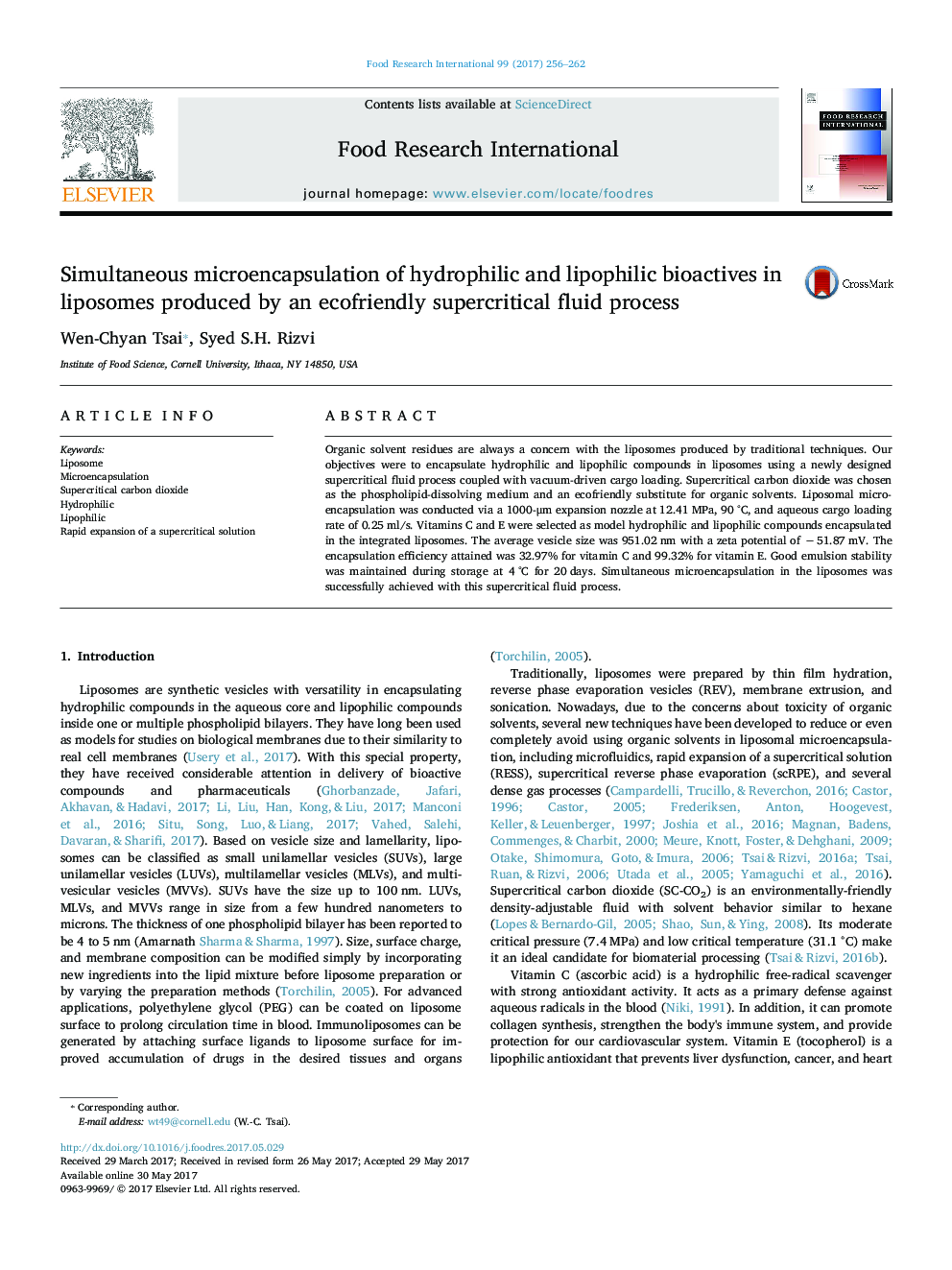| Article ID | Journal | Published Year | Pages | File Type |
|---|---|---|---|---|
| 5768098 | Food Research International | 2017 | 7 Pages |
â¢A rapid supercritical fluid process was developed for generation of liposomes.â¢Vacuum-driven cargo loading and nontoxicity were the main features of this process.â¢Hydrophilic and lipophilic compounds were simultaneously encapsulated in liposomes.â¢Unilamellar and multivesicular vesicles were observed in the resultant liposomes.â¢Good emulsion stability was maintained during shelf life evaluation at cold storage.
Organic solvent residues are always a concern with the liposomes produced by traditional techniques. Our objectives were to encapsulate hydrophilic and lipophilic compounds in liposomes using a newly designed supercritical fluid process coupled with vacuum-driven cargo loading. Supercritical carbon dioxide was chosen as the phospholipid-dissolving medium and an ecofriendly substitute for organic solvents. Liposomal microencapsulation was conducted via a 1000-μm expansion nozzle at 12.41 MPa, 90 °C, and aqueous cargo loading rate of 0.25 ml/s. Vitamins C and E were selected as model hydrophilic and lipophilic compounds encapsulated in the integrated liposomes. The average vesicle size was 951.02 nm with a zeta potential of â 51.87 mV. The encapsulation efficiency attained was 32.97% for vitamin C and 99.32% for vitamin E. Good emulsion stability was maintained during storage at 4 °C for 20 days. Simultaneous microencapsulation in the liposomes was successfully achieved with this supercritical fluid process.
Graphical abstractDownload high-res image (113KB)Download full-size image
